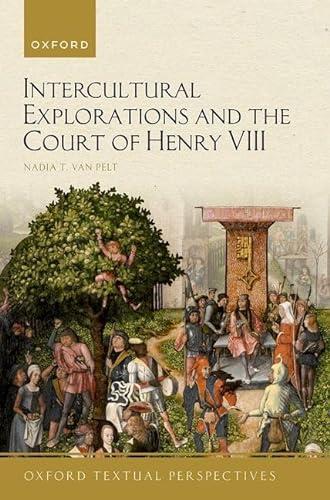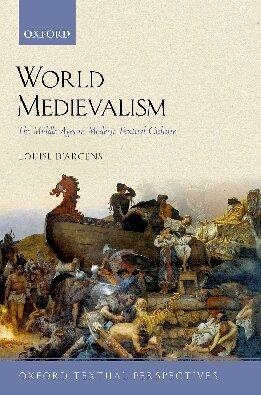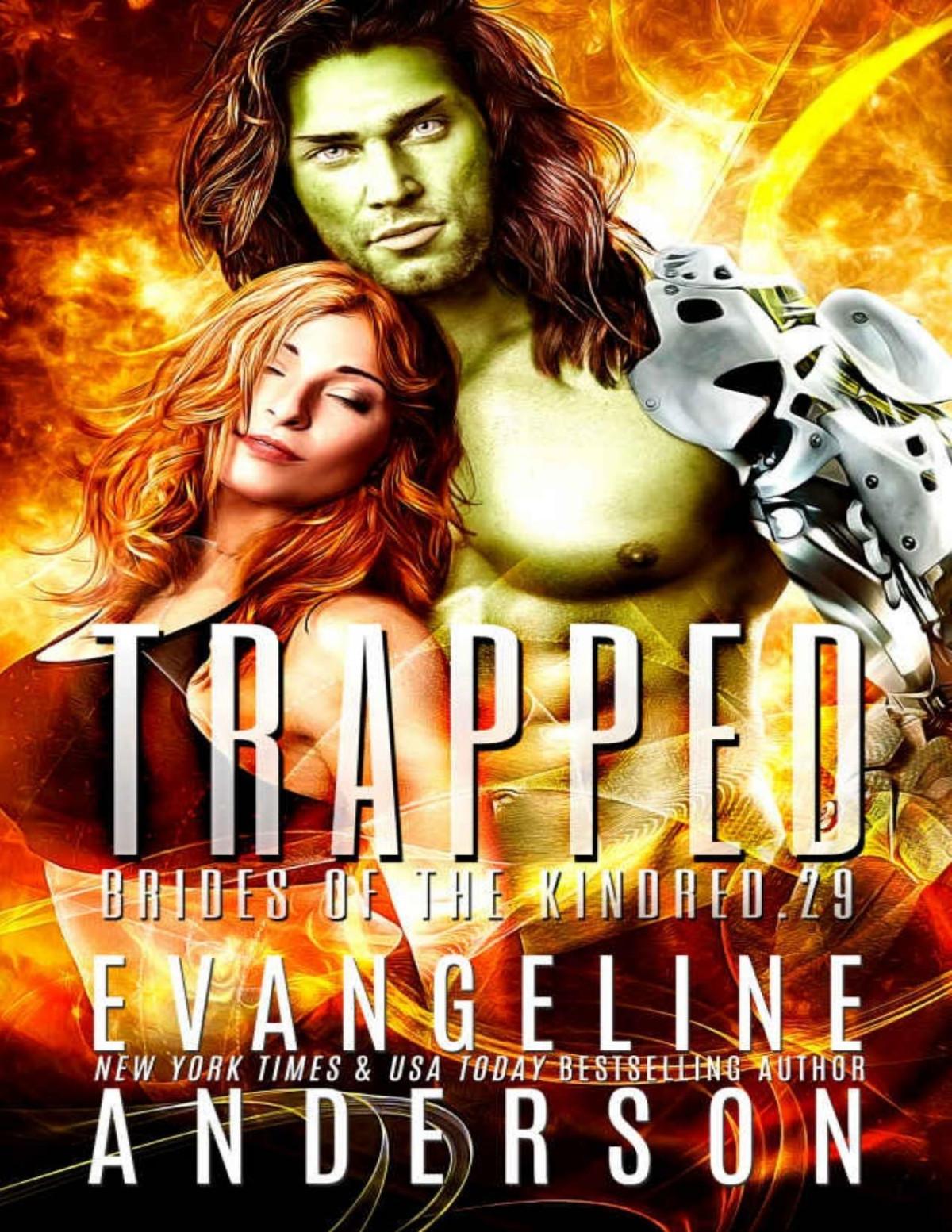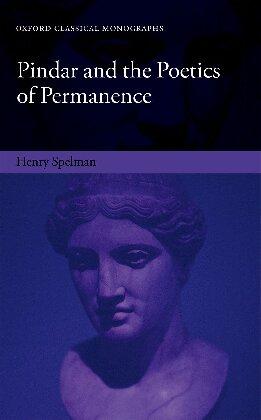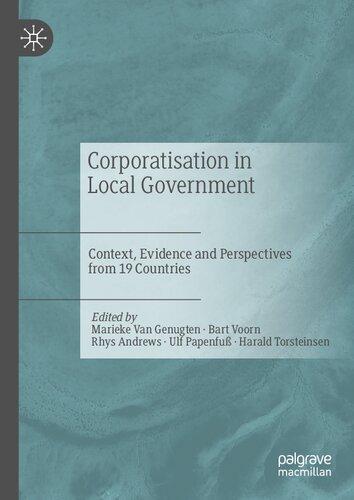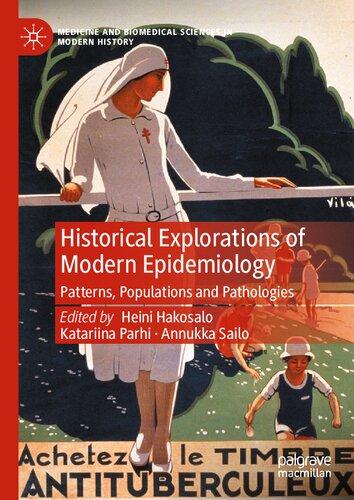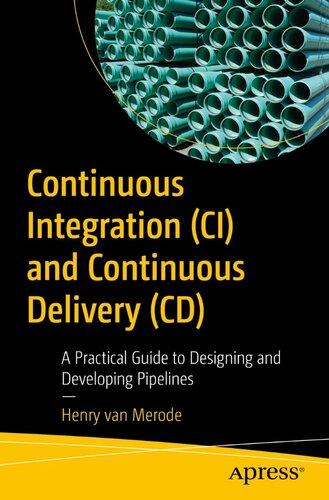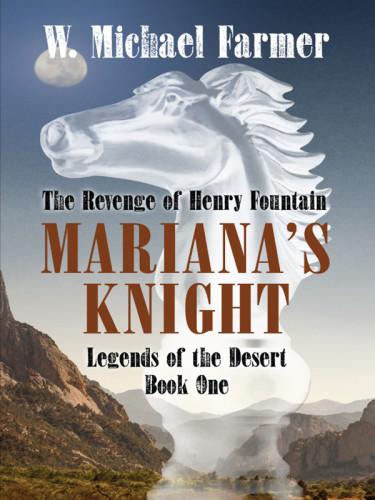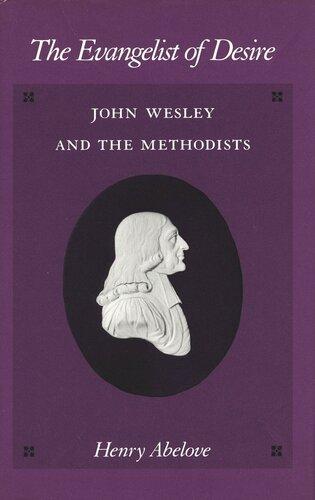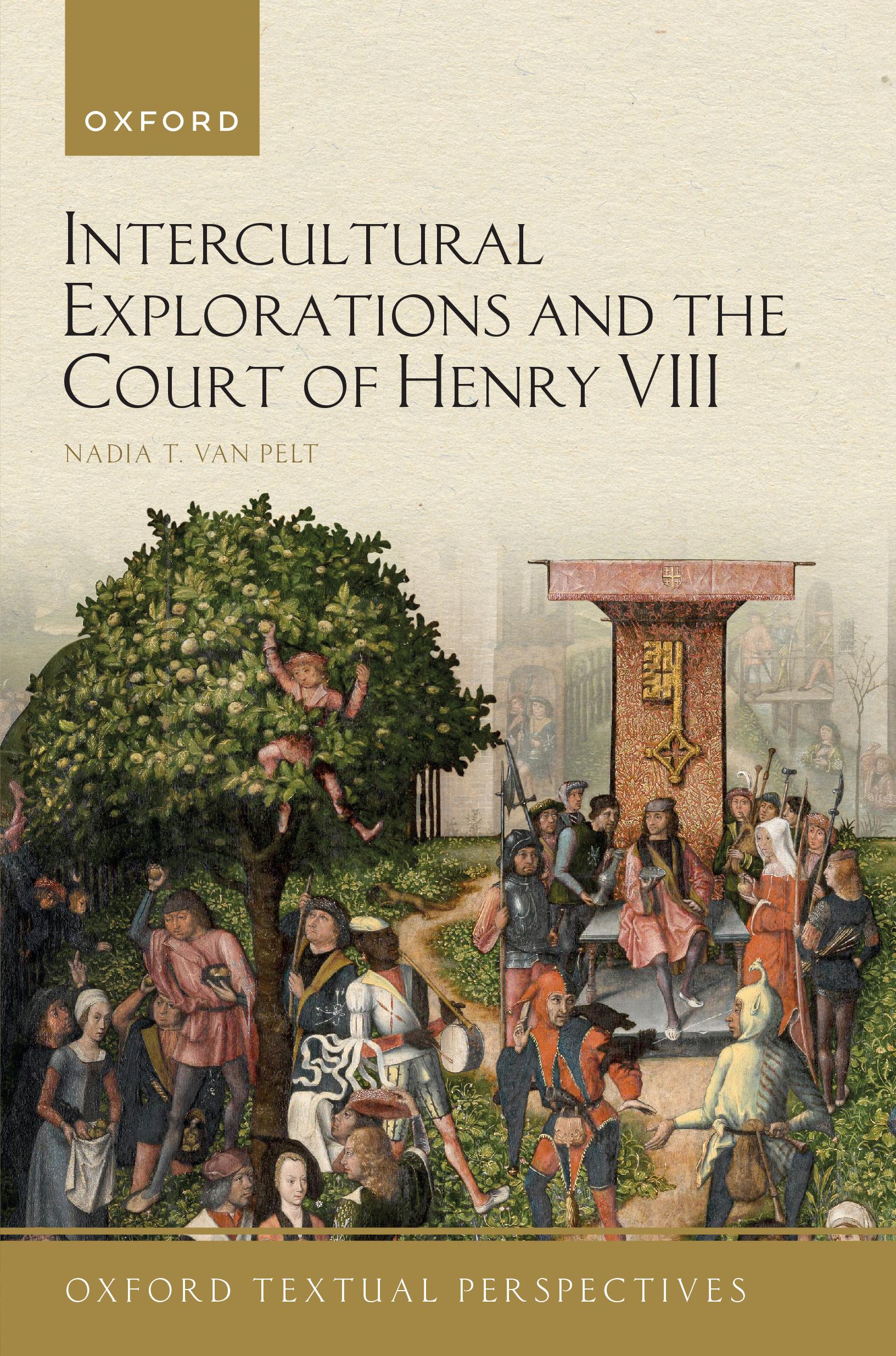Visit to download the full and correct content document: https://ebookmass.com/product/intercultural-explorations-and-the-court-of-henry-viii-o xford-textual-perspectives-van-pelt/
More products digital (pdf, epub, mobi) instant download maybe you interests ...
World Medievalism: The Middle Ages in Modern Textual Culture (Oxford Textual Perspectives) Louise D'Arcens
https://ebookmass.com/product/world-medievalism-the-middle-agesin-modern-textual-culture-oxford-textual-perspectives-louisedarcens/
Trapped: Brides of the Kindred Book 29 Faith Anderson
https://ebookmass.com/product/trapped-brides-of-the-kindredbook-29-faith-anderson/
Pindar and the Poetics of Permanence Henry Spelman
https://ebookmass.com/product/pindar-and-the-poetics-ofpermanence-henry-spelman/
Corporatisation in Local Government: Context, Evidence and Perspectives from 19 Countries Marieke Van Genugten
https://ebookmass.com/product/corporatisation-in-localgovernment-context-evidence-and-perspectives-from-19-countriesmarieke-van-genugten/
Children and the European Court of Human Rights Claire Fenton-Glynn
https://ebookmass.com/product/children-and-the-european-court-ofhuman-rights-claire-fenton-glynn/
Historical Explorations of Modern Epidemiology Heini
Hakosalo
https://ebookmass.com/product/historical-explorations-of-modernepidemiology-heini-hakosalo/
Continuous Integration (CI) and Continuous Delivery (CD): A Practical Guide to Designing and Developing Pipelines 1st Edition Henry Van Merode
https://ebookmass.com/product/continuous-integration-ci-andcontinuous-delivery-cd-a-practical-guide-to-designing-anddeveloping-pipelines-1st-edition-henry-van-merode/
Mariana's Knight: The Revenge of Henry Fountain Farmer
https://ebookmass.com/product/marianas-knight-the-revenge-ofhenry-fountain-farmer/
The Evangelist of Desire: John Wesley and the Methodists Henry Abelove
https://ebookmass.com/product/the-evangelist-of-desire-johnwesley-and-the-methodists-henry-abelove/
OXFORDTEXTUALPERSPECTIVES InterculturalExplorationsandthe CourtofHenryVIII GENERALEDITORS ElaineTreharne
GregWalker
InterculturalExplorationsand theCourtofHenryVIII NADIAT.VANPELT GreatClarendonStreet,Oxford, OX26DP, UnitedKingdom
OxfordUniversityPressisadepartmentoftheUniversityofOxford. ItfurtherstheUniversity’sobjectiveofexcellenceinresearch,scholarship, andeducationbypublishingworldwide.Oxfordisaregisteredtrademarkof OxfordUniversityPressintheUKandincertainothercountries
©NadiaT.vanPelt2024
Themoralrightsoftheauthorhavebeenasserted Allrightsreserved.Nopartofthispublicationmaybereproduced,storedin aretrievalsystem,ortransmitted,inanyformorbyanymeans,withoutthe priorpermissioninwritingofOxfordUniversityPress,orasexpresslypermitted bylaw,bylicenceorundertermsagreedwiththeappropriatereprographics rightsorganization.Enquiriesconcerningreproductionoutsidethescopeofthe aboveshouldbesenttotheRightsDepartment,OxfordUniversityPress,atthe addressabove
Youmustnotcirculatethisworkinanyotherform andyoumustimposethissameconditiononanyacquirer
PublishedintheUnitedStatesofAmericabyOxfordUniversityPress 198MadisonAvenue,NewYork,NY10016,UnitedStatesofAmerica
BritishLibraryCataloguinginPublicationData Dataavailable
LibraryofCongressControlNumber:2023942308
ISBN9780192863447
ISBN9780192863454(pbk.)
DOI:10.1093/oso/9780192863447.001.0001
Printedandboundby
CPIGroup(UK)Ltd,Croydon,CR04YY
LinkstothirdpartywebsitesareprovidedbyOxfordingoodfaithand forinformationonly.Oxforddisclaimsanyresponsibilityforthematerials containedinanythirdpartywebsitereferencedinthiswork.
ForJohnJ.McGavin withgratitude SERIESEDITOR’SPREFACE OxfordTextualPerspectives isaseriesofinformativeandprovocativestudiesfocusedupontexts(conceivedofinthebroadestsenseof thatterm)andthetechnologies,cultures,andcommunitiesthatproduce,inform,andreceivethem.Itprovidesfreshinterpretationsof fundamentalworks,images,andartefacts,andofthevitalandchallengingissuesemerginginEnglishliterarystudies.Byengagingwiththe contextsandmaterialityofthetext,itsproduction,transmission,and receptionhistory,andbyfrequentlytestingandexploringtheboundariesofthenotionsoftextandmeaningthemselves,thevolumesin theseriesquestionconventionalframeworksandprovideinnovative interpretationsofbothcanonicalandlesswell-knownworks.These bookswilloffernewperspectives,andchallengefamiliarones,bothon andthroughtextsandtextualcommunities.Whiletheyfocusonspecificauthors,periods,andissues,theynonethelessscanwiderhorizons, addressingthemesandprovokingquestionsthathaveamoregeneral applicationtoliterarystudiesandculturalhistoryasawhole.Eachis designedtobeasaccessibletothenon-specialistreaderasitisfresh andrewardingforthespecialist,combininganinformativeorientation inalandscapewithdetailedanalysisoftheterritoryandsuggestionsfor furthertravel.
ElaineTreharne and GregWalker
FOREWORD SeldomhasaroyalcourtinvitedsuchintensivestudyasthatofHenry VIII,orbecomesoprominentinpopularculture.ThisbookisneverthelesscommittedtoofferingafreshperspectiveonTudorcourtcultureby usingcontinentalsourcestocontextualize,nuance,andattimes, challenge long-heldperspectivesthathavebeenformedthroughtheuse ofwell-studied,Anglophonesources.Assuch,thisbookoffersadditionalcross-languageandtransculturalperspectivestoexploreandhelp re-examineinformationthat,inisolation,canbeeasily—andindeed hasbeen—takenatfacevalue,butwhichwhenreadinawidercontext cansuggestalternativemeanings.InChapter1,whichfocusesonmusic, thisapproachleadstoamorecompleteunderstandingoftheentourage thatKatherineofAragonbroughtwithhertoEngland.ItfurthermorerevealstheTudorcourtin1501tohavebeenamoreintercultural placethantheEnglishrecordssuggest,andimportantlyshowsthatthe Africanpresenceinthiscontextwasgreaterthanhashithertobeen assumed.Ireveal,forexample,thatbeforethenow-famoustrumpet playerJohnBlankefirstappearedintheTudorcourtrecords,another BlacktrumpetercanbesituatedatseawithKatherineofAragon,andat thefestivitiescelebratinghermarryingArthurTudor.Atamethodologicallevel,thisdiscoverysuggeststhatfurthercross-languagestudiesof theEnglishcourtrecordsandthoseofCastile,Aragon,andtheHabsburgsmayyieldmoreinformationaboutthemobilityofcourtstaff,and willperhapsrevealthepresenceofotherpersonsofAfricandescent now‘hidden’behindgenericgrouppaymentreferencesintheEnglish chamberbooks.
Thisbookalsointroducessourcematerialwhichcaninformcurrent understandingsofTudorcourtculture,suchas,forexample,material fromtheArchivoGeneraldeSimancas,andSpanishaccountbooks keptbyGonzalodeBaeza,thetreasurerofQueenIsabellaofCastile, whichprovideinsightintothemake-upandexpensesofherhousehold andthatoftheroyalchildren.Suchevidenceprovidesexcitingadditions tocurrentTudorscholarship,and,forexample,provesthatKatherine ofAragonbroughtan‘enana’[‘dwarf’]inhertrainwhenshetravelled
toEngland.InChapter2,thisservestocontextualizeunderstandingsof fooleryinthecontextoftheroyalcourt,inastudyexploringthepoliticalanddiplomaticmeaningsofAmbassadorChapuys’sbringingafool toKatherineofAragon’sdeathbed.Thischapteraddressestheexpectationsandpreconceptionscontemporarieswouldhavehadofcourt fools.Mightafoolalsobeabletoactasaspy?Whatwerefoolsthought tobecapableofdoingordelivering?Andcouldtheperformanceof afoolexpresspoliticalmessagesatvariouslevels,thatis,couldboth the actions ofthefoolandthefactofthefool’s presence simultaneously expressdifferentpoliticalpurposesforboththeperformerandtheir patron?
InChapter3,French-andGerman-languagefestivalbooksandVenetianambassadorialaccountscomplementandcontextualizeAnglophonesourcesdetailingthemeetings—andsharedfeasts—betweenthe HabsburgemperorCharlesVandHenryVIII.Buildingonanextensive bodyofstudiesinfoodhistoryinwhichthebanquetisunderstoodasa performative‘multimedia’event,thischapteracknowledgesotherinternationalinstancesofpresenting,ritualizing,andacceptingfoodand theirunderlyingpreconceptionsofritualpower,hospitality,spectacle, andtrust.And,actingintherealizationthatafullreconstructionofa banquetingeventwithallitsseparatemediaformscannotbecreated, insteadanattemptismadetocontributetotheunderstandingofhow HenryVIII,throughhospitalityandconsumption,investedinhisrelationshipwiththemostpowerfulmaninEurope,andensuredthatother partiesweremadesufficientlyawareofhisefficaciousforeignrelations. Thechapterfurthermoreprovides‘foodforthought’regardingamore systematicinclusionoffoodandperformancehistorywithin‘general’ studiesofTudorhistory.
Wheresomediscussions,suchasthatofTudorbanquetingindiplomaticsettings,canbenefitfromadditionalperspectives,someaspectsof Tudorhistoryaresodramaticallyundersourcedthattheyneed,atfundamentallevels,tobesupplementedwithfreshevidence,andrevisited viaadditionalmethodologicalapproachesinordertoenhanceproductivescholarship.Thisrepresentsalacunainresearchthatcannotbe solvedovernight,butitcanatleastbeaddressedinordertoredressthe balance,andsuggestionsaremadeforproductivestepsinthatdirection. Thus,Chapters 4 and 5 jointlytakeasacasestudythewaysinwhich scholarshiphascreatedahistoricalnarrativeaboutAnneofCleves,
Henry’ssecondforeignqueen,whichisbothhyperfocusedonherphysicalappearance,anddismissiveofherpoliticalordiplomaticrelevance. Chapter4,‘FashionVictims’,employsasartoriallensasatooltoaddress theformerissue.ItrevealsthatdescriptionsofAnneofClevesmadein ambassadoriallettersandothercorrespondence,andinHall’s Chronicle arebestunderstoodaspartofagenreofwritinginwhichaforeign princessandherentouragewererepresentedinaformulaicway,as isshownthroughexamplesofItalian,Polish,Habsburg,English,and Spanishbridesatcourtswheremodesofattirewerewornthatdiffered fromthosefavouredintheirhomecountries.Thesedescriptions,we willsee,saymoreaboutthisgenreofwritingthanabouttheprincess bridesinquestion.
Thebookends(Chapter5)byintroducingnewsourcematerialtothe field,intheformofanextantcharterwhichhasbeenhidinginplain viewattheGeldersArchiefinArnhem,theNetherlands.Thischarter,currentlyunstudiedinTudorhistory,consolidatedthe perverba defuturo betrothalofAnneofClevesandFrancisofLorraine.Itprovidesnewinsightsintothestakeholdersofthematch,inwhichAnne ofCleves’smother,MariaofJu¨lich-Berg,turnsouttohavebeenpivotal,contrarytowhatpreviousscholarshiphassuggested.Interestingly, studyingthecharterasanobjectrevealsthatitsphysicalcharacteristicswouldhavemadeitverycleartoanyonewhosawit,including personswhodidnotreadLowGerman,thatAnnehadnotbeenconsultedwhenthismatchwasmade,andshehadnotnecessarilyagreedto it.ThiswouldhavemadeitveryeasytoconsidertheCleves–Lorraine matchnotbinding,fromwhichfollowsthatifthischarterhadbeenproducedattheEnglishcourt,itwouldhavebarredHenryVIII’sannulling hismarriagetoAnne.AnneofCleves’snoturgingforthecharterto beproducedtellinglyshowsherawarenessofmaritalpolitics,andher abilitytomakeaninformedchoiceastowhatwouldgiveherthebest optionsofsurvivalattheTudorcourt.Acknowledgingthatmanuscript sourcesinLowGermanmaypresentsomescholarsinthefieldwitha languagebarrier,thischaptersuggestshowtomakeuseofsuchmaterialregardlessofone’sunderstandingofthelanguageinwhichitwas written.
Thematerialengagedwithinthisbookisnotexhaustive,andreaderswillnoticethat,becausethebookisdrivenbythewishtoexplore differentmethodologicalstreamsofresearchfortheopportunitiesthey
representinrelationtothecurrentdiscourse,attimeschoiceshadtobe madeastowhattoinclude.Thisalsomeantthatwhilewritingthisbook, Ihavemadeexcursionsinto‘side-projects’sparkedbytheresearchand readingdoneforthisproject.¹ Together,thechaptersinthisbookhave beendesignedtomakeanattempt—wherepossible—atunravellingthe habitsandcustomswhichunderpinnedanddeterminedTudorcourt culture,includingceremonyandritual,andtheperformanceofmany culturalpracticesthatarenotalwaysrecognizedas‘performance’,but whichcouldhavethatuse,especiallyinanintricatelypoliticalenvironmentsuchastheTudorcourt.² Additionally,Iofferanumberof ‘interculturalexplorations’throughaddressingprimarysourcematerial writteninSpanish,German,orFrench,andwhichrepresentsadditional perspectivestothewell-knownandintensivelyquotedperspectivesthat havecontributedtodefiningthefield.Ishowthathoweverquintessentially‘English’thecourtofHenryVIIImayhavebeen,itwasalsoaplace ofculturalandinterculturalencountersthatisbestunderstoodwhen studiedindialogueacrosslanguages,geographicalbarriers,andscholarlydisciplines.Indeed,theprimaryevidenceemployedinthisbook aimstogiveanuancedaccountofTudorcourtmattersfromarangeof perspectivestohelpquestionwhatweknow,orthinkweknow,about theTudorcourt.
Aswillbeevidentfromthechaptersthatfollow,thisbookgratefully makesuseoftheexcellentresourcesofferedbyRecordsofEarlyEnglish Drama,aninternationalprojectbasedattheUniversityofToronto,and oftheTudorChamberBooksproject,acollaborativeeffortbetween theUniversityofWinchester,theNationalArchives,andtheUniversityofSheffieldDigitalHumanitiesInstitute.Italsostudiesadditional sourcesthatsupplementandcontextualizetheREEDandChamber
¹ Notably,K.P.S.JanssenandNadiaT.vanPelt,‘RoyalepistolarycourtshipinLatin? ArthurTudor’s“loveletter”toKatherineofAragonattheArchivoGeneraldeSimancas andFrancescoNegri’sArsEpistolandi’.RenaissanceStudies(2023),https://doi.org/10.1111/ rest.12864;and VanPelt,‘JohnBlanke’swages:Nobusinesslikeshowbusiness’. Medieval EnglishTheatre 44(2023),3–35.
² Fullbibliographicaloverviewsareofferedperchapter,buthereIshouldalready mentiontheimportantworkdonein JanetteDillon, TheLanguageofSpaceinCourt Performance,1400–1625 (Cambridge:CambridgeUniversityPress,2010);ChristinaNormore, AFeastfortheEyes:Art,Performance&theLateMedievalBanquet (Chicago,IL: UniversityofChicagoPress,2015);andGregWalker, WritingUnderTyranny:English LiteratureandtheHenricianReformation (Oxford:OxfordUniversityPress,2005).
Bookmaterial.Theserangefromambassadorialcorrespondenceto accountbooks,butalsoincludelegalrecords,royalwarrants,marital contracts,andtravelaccounts.Asobserved,animportantelementof thisbookliesintheintroductionoffreshperspectivesandnewsource material,aswellasrevisitingpreviouslystudiedmaterial.ThereforeI havesoughtto,whenpossible,introducereaderstotherelevantweb linksformanuscriptresourceswhenanarchivehasdigitizedpartof theircollections,tomakemoretangibleandinteractiveforreadersanywhereintheworldthediscoveryoffreshsourcematerial,aswellas thechancetorevisitknownmaterials.³ Inthisapproach,Ifollowthe footstepsofJohnJ.McGavinandGregWalker’s ImaginingSpectatorship (2016)inwhichthebibliographysectionpresentsprimarysources ofdifferentformandformat(editions,images,manuscripts,andweb resources),breakingwiththeconventional,hierarchicalorderingof informationthatprioritizesphysicalarchivalsourcesoverdigitized ones.⁴ TheCOVID-19pandemichastaughtusthatwecannotalways physicallyaccessanarchivaldocument,andbyofferinglinkstoscans ofmanuscriptsources,thestudyofearlytextscanbemadeamore inclusive,andlessprivilegedact.Ihopetoencouragereadersofthis book,especiallystudentreaders,tousethelinkstodigitized(archival) materialinteractively;tonottakeanyauthor’sword—includingmy own—forclaimsmade,butto,wheneverpossible,returntotheoriginal,toseeforthemselveswhatiswrittenintheoriginalmaterial,and whatconstitutestheproductofinterpretation.
³ PleasenotethatinthisbookURLsareprovidedinthefootnotesforprimarysource material,butthatDOIlinkstosecondarysourcematerialareonlygivenintheBibliography.Alsonotethat,despitethebook’spreferencefor(digitized)archivalmaterial,this bookhasalsomadeuseofcalendarsorregisters,suchasthe LettersandPapers and CalendarofStatePapers.WheninthisbookIreferredtoadigitizedprimarysourceofwhich Iwasalsoawarethatithadbeencalendared,Ihavecitedbothsoastoenablecomparison.
⁴ JohnJ.McGavinandGregWalker, ImaginingSpectatorship:FromtheMysteriesto theShakespeareanStage (Oxford:OxfordUniversityPress,2016),Bibliography,185–97.
CREDITS PortionsofChapter1ofthisbookoriginallyappearedinNadiaT.van Pelt,‘JohnBlanke’sWages:NoBusinessLikeShowBusiness’, Medieval EnglishTheatre 44(2023),3–35.Theseportionsarereprintedwithpermissionfromtheeditorsof MedievalEnglishTheatre,forwhichIam mostgrateful.
Chapter2ofthisbookoriginallyappearedas,‘KatherineofAragon’s Deathbed:whyChapuysBroughtaFool’, EarlyTheatre 24:1(2021),63–87. https://doi.org/10.12745/et.24.1.4357 Iamgratefultotheeditorsof EarlyTheatre fortheirpermissiontoreprintthiswork.
Allquotationsfrom TheReceytoftheLadieKateryne,ed.byGordon Kipling,EETSno.296(Oxford:OxfordUniversityPress,1990),areby permissionoftheCounciloftheEarlyEnglishTextSociety.
AllquotationsfromAntoniodelaTORREandE.A.delaTORRE, CuentasdeGonzalodeBaeza,TesorerodeIsabellaCatólica (2vols; Madrid:ConsejoSuperiordeInvestigacionesCientı´ficas,1955–1956), andallquotationsfromAntoniodelaTORRE,(ed.), LaCasadeIsabel laCatólica (Madrid,ConsejoSuperiordeInvestigacionesCientı´ficas, 1954),arebypermissionoftheConsejoSuperiordeInvestigaciones Cientı´ficas.
CitationsfromWilliamTydeman,ed., TheMedievalEuropeanStage, 500–1550 (Cambridge:CambridgeUniversityPress,2001)©ReproducedwithpermissionofTheLicensorthroughPLSclear.
Everyefforthasbeenmadetotracethecopyrightholdersforquoted material.Wherethishasnotprovedtobepossible,Iaskthecopyright holdertocontactOxfordUniversityPress,andwewillattempttorectify thisforanyfutureeditions.
ACKNOWLEDGEMENTS Aswithanybookproject,massivedebtswereincurred,andIwould liketoexpressmyheartfeltthankstoeveryonewhohasbeenapartof this.Noneofthiswouldhavebeenpossibleifitweren’tforthestaffat TUDelftLibrary,inparticularWillRoestenburg,whohavebeenexceptionallyhelpfulandencouraging.Iwouldalsoliketothankthestaffat GeldersArchief,Arnhem,forhelpingmewithmyresearchonsite,and formakingdigitallyavailabletheArnhemChartersothatthiscannow beaccessedbythewiderpublic.ForguidingmethroughtheLibrijein theWalburgiskerkinZutphen,IthankJanBedaux;itwasagreatprivilegetovisitthisbeautifullibraryandaccessitswell-preservedtreasures; the1519-printededitionofErasmus’s MoriaeEncomium referredtoin Chapter 2 wasreadthere.
Iamverygratefultothosewhohavereadandrespondedtopartsof thisbook,inparticulartoGregWalker,whoreadallofit,andmadevery generoussuggestionswhichhavegreatlyhelpedmeimprovethisbook, andSarahCarpenter,ClareEgan,WimHu¨sken,andJohnJ.McGavin whoreadpartsofit,andkindlysharedtheirexpertiseandwisdom. MegTwycrossandElisabethDuttongaveextremelyhelpfulfeedback thatprovidedmewithtools,earlyonintheproject,thatenabledtacklingsomeofitsmorechallengingaspects.Gratitudeisalsoextended toElaineTreharne,totheanonymousreviewersatOxfordUniversityPress,andtoJoSpillaneforherguidanceduringthepublication process.Chapter 2 waspreviouslypublishedasanarticlein EarlyTheatre (2021),andIthankNicoleLamontandMichaelAngellforkind suggestionsduringitseditingprocess.ErinKellyisthankedforher encouragementandhervoteofconfidence.AtTUDelft,IthankSo¨ren Johnsonforlivelydiscussionsandmoralsupport.
ToPeterGreenfieldIowethanksforhiskindlysharingREED:Hampshire materialpriortopublication;HilaryDodaandZoeScretiare thankedforsharingwithmetheirphotosofarchivalmaterial,which wasincrediblygenerous.AnnaAugustyniak,ElisaFuhrmann,Renske Janssen,andÉloïseRubyshouldalsobementionedhere:thankyou forallyourhelp.AspecialmentiongoesouttoLauraMarienusforher
invaluableworkonthetranscriptionoftheArnhemmanuscript.Andto myoldEnglishteacher,KevinSchuck,whoopenedthedoortoasecond languageinwhichIcouldwrite.
Someofthematerialinthisbookwaspresentedatconferencesand symposiumsandIamgratefulfortherigorousandhelpfulfeedback given;IwouldliketoparticularlyacknowledgetheMedievalEnglish Theatreconferenceseries,atwhichIwasgiventheopportunitytotry outideasandmethodologiesinaconvivialcontext.
Finally,IwouldliketothankDannyforhisunwaveringsupportand senseofhumour;and,ofcourse,myparents,KrijnandThérèse.Their takingmealongtocastlesandmuseumswhenIwasachildledtoan enduringfascinationwithanythingmedievalandearlymodern.
LISTOFILLUSTRATIONS 1.1.ChristophWeiditz, Trachtenbuch,Germanisches NationalmuseumDigitaleBibliothek.168/66. http://dlib. gnm.de/Hs22474/168.Publicdomainmark1.0. 29
1.2. PortretvaneenOnbekendeMan [PortraitofanUnknown Man],JanJanszMostaert,ca.1525–30,oilonpanel, 30.8cm×21.2cm.RijksmuseumAmsterdam.Public domain.
34
5.1.The‘Arnhemcharter’.GeldersArchief:0001-1791r. Reproducedwithpermission. 160
5.2.The‘Arnhemcharter’.GeldersArchief:0001-1791v. Reproducedwithpermission. 161
5.3.GeldersArchief:0001–1791,SealofAnthoineofLorraine, attachedtothe‘Arnhemcharter’(photographbythe author). 177
5.4.Reproducedwithpermissionfrom:Bibliothèquenationale deFrance,DépartementdesManuscrits.MSFrançais 2695,fol.45v. 178
5.5.GeldersArchief:0001–1791,SealofCharlesofEgmond, andafragmentofthesealofJohnIIIofCleves,attached tothe‘Arnhemcharter’(photographbytheauthor). 179
5.6.Reproducedwithpermissionfrom:Bibliothèquenationale deFrance,Bibliothèquedel’Arsenal,MS4790réserve,fol. 42v. 180
5.7.GeldersArchief:0001–1791,SealofJohnofCleves, attachedtothe‘Arnhemcharter’(photographbythe author). 181
5.8.GeldersArchief:0001–1791,SealofMariaofJu¨lich-Berg, attachedtothe‘Arnhemcharter’(photographbythe author). 183
LISTOFABBREVIATIONS AGS ArchivoGeneraldeSimancas
BL TheBritishLibrary
Casa TORRE,Antoniodela,(ed.), LaCasadeIsabella Católica (Madrid,ConsejoSuperiorde InvestigacionesCientı´ficas,1954)
CSPS G.A.Bergenrothetal.,eds., CalendarofState Papers,Spain,19vols(London:1862–1954).
CSPV RawdonBrownetal.,eds., CalendarofState Papers,Venice,38vols(London:1864–1947)
Cuentas TORRE,Antoniodela,andTORRE,E.A.dela, (eds.), CuentasdeGonzalodeBaeza,Tesorerode IsabellaCatólica (Madrid,ConsejoSuperiorde InvestigacionesCientı´ficas,1955–1956),vol.1 and2
EEBO EarlyEnglishBooksOnline
EETS TheEarlyEnglishTextSociety
EMH EarlyMusicHistory
ET EarlyTheatre
GldA GeldersArchief,Arnhem
HJ TheHistoricalJournal
JMH JournalofMedievalHistory
JSA JournaloftheSocietyofArchivists
JWCI JournaloftheWarburgandCourtauldInstitutes
LP LettersandPapers,ForeignandDomestic,ofthe ReignofHenryVIII,1509–47,ed.J.S.Brewer,J. GairdnerandR.H.Brodie(21vols,1862–1932)
METh MedievalEnglishTheatre
Normore, Feast ChristinaNormore, AFeastfortheEyes:Art, Performance&theLateMedievalBanquet (Chicago,IL:UniversityofChicagoPress,2015)
ODNB
OxfordDictionaryofNationalBiography
P&P Past&Present
PPEHenry
PPEMary
REED
Receyt
N.H.Nicolas,ed., ThePrivyPurseExpensesof KingHenryVIII (London,1827)
FrederickMadden,ed., PrivyPurseExpensesof thePrincessMary (London:W.Pickering,1831)
RecordsofEarlyEnglishDrama
GordonKipling,ed., TheReceytoftheLadie Kateryne,EETS,o.s.296(Oxford:Oxford UniversityPress,1990)
RQ RenaissanceQuarterly
RR RenaissanceandReformation
RS RenaissanceStudies
Rutland
SCJ
WilliamJerdan,ed., RutlandPapers:Original DocumentsIllustrativeoftheCourtsandTimesof HenryVIIandHenryVIII,selectedfromthe privatearchivesofHisGracetheDukeofRutland (London:CamdenSociety,1842)
SixteenthCenturyJournal
TNA TheNationalArchives
TKVNM
TijdschriftvandeKoninklijkeVerenigingvoor NederlandseMuziekgeschiedenis
ANOTEONNAMES Readersofthisbookwillnoticethatmostofthenamesofthe‘main players’onthestageoftheEuropeancourtsreferredtointhisbook arepresentedusingtheEnglishvariationsofthenames.Weseethisin CharlesV,FrancisI,IsabellaofCastile,andFerdinandofAragon.But also,forexample,inthedecisiontorefertoJadwigaJagiellonkaasHedwigJagiellon,andtorefertoSebastianGiustinianintheunderstanding thatthiswasnothowhewouldhavebeenaddressedinVenice.When anoriginalformofanamehasbeenmoredominantincurrentscholarship,thefrequentlyusedformwasusedtomakeiteasierforreadersto connectwhattheyhavereadelsewheretowhatispresentedhere(e.g., notethatIrefertoKatherineofAragon’ssisteras‘Juana’,not‘Joanna’). Forrelativelylesser-knownpersonsofinterest,Ihaveusedthenames astheyarepresentedintheprimarysources,thus,forexample,Richard Berde,insteadofRichardBeard.
ANOTEONCAPITALIZATION Throughoutthebook,theword‘Black’isspelledwithacapitalwhen itreferstopeopleorstudies.Theword‘white’isnotcapitalized.When directlyquotingsources,Iretaintheoriginalcapitalizationthroughout.Furthermore,when‘Black’or‘white’canbeidentifiedasanameor moniker,itiscapitalized,suchasforexampleinJeanBlanchetête[Jean Whitehead].
Queen’sTrumpetorSecondFiddle Forgingalliances Thisbookexplorescross-languageandtransnationalperspectives pertainingtointeractionsat,orwith,thecourtofHenryVIII.The firstchapter,however,musttakeusbackonegenerationearliertothe courtofHenryVII,andaddressesKatherineofAragon’s(1485–1536) arrivalinEnglandastheintendedbrideforArthurTudor(1486–1502). Assuchthischapterprovidesaframeworkthathelpsusbettertounderstandtheprincess’slaterfulfilmentoftheroleofHenryVIII’squeen, andshedslightonIberianinfluenceswithintheTudorcourt.Furthermore,thechapterservesasamethodologicalcasestudytoshowhow engagingwithSpanishaswellasFrancophoneBurgundiansources alongsidethebetter-knownEnglishrecords,canoffernewperspectives onaspectsofTudorcourtculturewhichhavesofarbeentakenfor granted.Thisapproachprovidesafoundationfortheremainderofthe book.
Iwillfirstsetthescene.ThehouseofTudorwasa‘new’royaldynasty, establishedafterHenryVII’svictoryoverRichardIIIatBosworthin 1485.Inordertoconsolidatethestatusofhishouse,Henrysoughtto formallianceswiththeestablishedmonarchiesinEurope,suchaswith IsabellaofCastile(1451–1504)andFerdinandofAragon(1452–1516), whohadthemselvesstartedas‘NewMonarchs’,touseStevenGunn’s term,atthebeginningoftheirreigns,havinghadtofightfortheir
InterculturalExplorationsandtheCourtofHenryVIII.NadiaT.vanPelt,OxfordUniversityPress. ©NadiaT.vanPelt(2024).DOI:10.1093/oso/9780192863447.003.0001
crownsjustasHenryhad.¹ Wastingnotimeinarranginghistwo-yearoldson’smarriagetothatofoneoftheyoungdaughtersofSpain,later knownasKatherineofAragon,Henryinitiatedpreliminarycontracts andopenednegotiationsasearlyas1488.² Abreakthroughwasreached in1489,andinMarchofthatyearIsabellaandFerdinandsignedthe TreatyofMedinadelCampo.³ OnthisfestiveoccasiontheEnglishdelegatesweretreatedto‘joustsandbullfights’,asreportedbythediplomat RogerMachado,perhapsofPortuguesedescent,whoservedHenryVII onanumberofforeignmissions.⁴ Yetoutwardgoodwillaside,itwould takeanotherdecadeofto-ingandfro-ingbeforethemonarchsofCastile andAragonwerepreparedtoletKatherinesailofftoEngland.⁵
Conditionsweretobemetbybothparties.‘Spanishdiplomats, whohadtonegotiatewiththe[English]king,recognizedhisextreme cunning’,writesSydneyAnglo.⁶Andindeed,bargainingtopicsbetween Henryandthe ReyesCatólicos,asIsabellaandFerdinandwouldbe
¹ StevenGunn,‘HenryVIIinContext:ProblemsandPossibilities’,History92:3(2007), 301–17(305).
² See,forexample, SydneyAnglo,‘TheLondonPageantsfortheReceptionofKatherineofAragon:November1501’, JWCI 26:1/2(1963),53–89(53).AtemporaryagreementwassignedbyQueenIsabellaandKingFerdinandon6July1488.MINISTERIO DECULTURAYDEPORTEArchivoGeneraldeSimancas,PatronatoReal,CapitulacionesconInglaterra,PTR,LEG,52,135(6July1488).Availableat: http://pares.mcu.es/ ParesBusquedas20/catalogo/description/2207858[Accessedon:22.03.2023].Readerswill findafineexampleofthesignaturesofthe ReyesCatólicos halfwaydownthepageonthe rightside.
³ MINISTERIODECULTURAYDEPORTEArchivoGeneraldeSimancas, PatronatoReal,CapitulacionesconInglaterra,PTR,LEG,52,29(approx.onorafter27 March1489).Availableat: http://pares.mcu.es/ParesBusquedas20/catalogo/description/ 2207751 [Accessedon:22.03.2023].
⁴ CSPSvol.1,#33(1489).Seealso,AdrianAiles,‘Machado,Roger[Ruy]’,ODNB,Oxford UniversityPress(version23September2004). https://doi.org/10.1093/ref:odnb/17527
⁵ Katherine’sdeparturewasastrongpoliticalbargainingpoint.Ina1498letter,de PueblawritesthattheEnglishkingandqueenwerehopingtoreceiveKatherinein thefollowingyear,supposedlytostartherculturalassimilationbylearningtheEnglish languageandcustoms,but,hewarns,underlyingthesesuggestionswasHenry’sreadinesstostartawarwithFrancethat,consideringtherecentpeacebetweenthe Reyes Católicos andthekingofFrance,wouldnotbeintheirinterest.MINISTERIODE CULTURAYDEPORTEArchivoGeneraldeSimancas,PatronatoReal,Capitulaciones conInglaterra,PTR,LEG,52,144.Availableat: http://pares.mcu.es/ParesBusquedas20/ catalogo/description/2207867 [Accessedon22.03.2023].Cataloguedin: CSPS vol.1,#227 (25September1498).
⁶ SydneyAnglo,‘IlloftheDead.ThePosthumousReputationofHenryVII’, RS 1:1 (1987),27–47(28).
titledbyPopeAlexanderVIin1496,⁷ included,amongotherthings,the treatmentofSpanishmerchantsinEnglishterritories,and—witheerie foresight—thespecificationsofKatherine’sdowrylandstobesupplied byHenryshouldKatherinebecomeawidow.Furthermore,Katherine’s placeintheSpanishlineofinheritanceneededtobeformallyaddressed beforethealliancecouldbecementedbymarriage.ThetenuousrelationshipthatbothroyalhouseshadcultivatedwithFrancewasalsoon theagenda.IsabellaandFerdinandwere,however,particularlyworried aboutthestabilityoftheEnglishthrone,andaboutpotentialpretenders tothecrown,suchasPerkinWarbeck,whoseexecutionledDrRodrigo GonsalesdePuebla—adiplomatresidentinEngland—towritetohis patrons:‘TherehavealwaysbeenpretenderstothecrownofEngland; butnowthatPerkinandthesonoftheDukeofClarencehavebeenexecuted,theredoesnotremain“adropofdoubtfulRoyalblood”,theonly RoyalbloodbeingthetruebloodoftheKing,theQueen,and,aboveall, ofthePrinceofWales.’⁸ HenryVII,itseems,hadliveduptotheexpectationsoftheReyesCatólicosandcouldnowlookforwardtowelcoming hisnewdaughter-in-law.
Burgundian-stylesplendour Politicalexpectationsaside,Henryalsoneededtomeetimplicitsocial expectationsthatcamewithKatherine’simminentarrivalinEngland. Onlyafewyearsbefore,inOctober1496,Katherine’ssisterJuanaof Castile(1479–1555)hadmarriedtheBurgundianArchdukePhilippe‘le Beau’(1478–1506),thesonoftheHolyRomanEmperorMaximilianI (1459–1519).TheceremonyandfestivitiestookplaceinLierinwhatis nowBelgium.Themarital‘deal’hadbeenclosedintheunderstanding thatMargaretofAustria(1480–1530),whowasPhilippe’ssister,would marrytheSpanishcrownPrinceJuan(1478–97)tofurtherstrengthen theSpanish–Burgundianconnection.Andindeed,shortlyafterJuana’s arrival,theSpanishfleetthathaddeliveredhertohernewhusband,
⁷ OliviaRemieConstable, ToLiveLikeaMoor:ChristianPerceptionsofMuslimIdentityinMedievalandEarlyModernSpain (Philadelphia,PA:UniversityofPennsylvania Press,2018),5.
⁸ CSPS vol.1,#249(11January1500);Seealso, S.B.Chrimes, HenryVII (NewHaven, CT:YaleUniversityPress,1999),73.
sailedofftobringMargaretacrosstheseastoSpain.⁹JuanandMargaret weremarriedinthespringof1497inthecathedralofBurgos.¹⁰
MeanwhileintheLowCountries,Juanahadbeenenthusiastically welcomedbythecityofAntwerp,whichshepassedthroughonherway toLier,andhadinDecember1496enjoyedawarmcivicreceptionin thecityofBrusselswhereshewashonouredwithanelaborate joyeuse entrée [joyousentry]featuring‘twenty-seventableauxvivants’.¹¹ And nowthatHenryVIIwaswelcomingJuana’ssister,itwasunthinkable thathewouldorganizeaweddingeventthatwasanylessimpressive thantheonehostedbyhisBurgundianneighbours.AsTessKnighton observes,‘manyofthoseamongstCatherine’sSpanishretinue(includinganumberofmusiciansservingintheroyalhousehold)wouldalso haveattendedJuana’swedding,andtheTudorkingwouldundoubtedly havebeencomparedwiththeBurgundianduke,andtheEnglisheffort measuredagainsttheFlemish’.¹²
⁹ Forthevariousdocumentspertainingtothis‘doublewedding’,see ADN,B.432,in JulesFinot,ed., CollectiondesInventairesdesArchivesCommunalesAntérieuresa1790 (Lille:ImprimeriedeL.Danel,1899),vol.1,part1,329.Pleasenotethatasthepagesofthe CollectiondesInventaires arenotnumbered,thereaderisaskedtotakethepagenumber asthedocumentpagenumber(countingfromtitlepage).ForMargaretbeingbrought toSpainusingtheshipsthatcarriedJuanatoFlanders:MINISTERIODECULTURAY DEPORTEArchivoGeneraldeSimancas,PatronatoReal,CapitulacionesconInglaterra, PTR,LEG,52,40(28March1496).Availableat: http://pares.mcu.es/ParesBusquedas20/ catalogo/description/2207762[Accessedon:22.03.2023].ForanEnglishsummary:CSPS vol.1,#128.(28March1496).Seealso, Bjo¨rnR.Tammen,‘AFeastoftheArts:Joannaof CastileinBrussels,1496’, EMH 30(2011),213–48(213).
¹⁰ AntonioRumeudeArmas,ed., ItinerariodelosReyesCatólicos,1474–1516 (Madrid: ConsejoSuperiordeInvestigacionesCientíficas,1974),233.
¹¹ PaulVandenbroeck,‘ABrideAmidstHeroines,FoolsandSavages:TheJoyousEntry intoBrusselsbyJoannaofCastile,1496(Berlin,Kupferstichkabinett,Ms.78D5)’, JaarboekKoninklijkMuseumvoorSchoneKunstenAntwerpen (2012),153–94(153); Laura Weigert, FrenchVisualCultureandtheMakingofMedievalTheatre (Cambridge:CambridgeUniversityPress,2015),Chapter 1, 26–73; WimBlockmansandEstherDonckers, ‘Self-RepresentationofCourtandCityinFlandersandBrabantintheFifteenthandEarly SixteenthCenturies’,inWimBlockmansandAntheunJanse,eds., ShowingStatus:RepresentationofSocialPositionsintheLateMiddleAges(Turnhout:Brepols,1999),81–111,esp. 94–6and99–107; GordonKipling,‘Brussels,JoannaofCastile,andtheArtofTheatrical Illustration(1496)’, LeedsStudiesinEnglish 32(2001),229–53;Tammen,‘AFeastofthe Arts’,214.
¹² TessKnighton,‘NorthernInfluenceonCulturalDevelopmentsintheIberianPeninsuladuringtheFifteenthCentury’, RS 1:2(1987),221–37(222); GordonKipling, The TriumphofHonour:BurgundianOriginsoftheElizabethanRenaissance,Publicationsof theSirThomasBrowneInstitute,GeneralSeries6(TheHague:LeidenUniversityPress,
ThelikelypressurecausedbythissignificantthreattoHenry’spublic imagewasenhancedbythefactthattheinhabitantsoftheBurgundiancourtswerewhatwemightnowcall‘trendsetters’,whosecultural practicesandexpressionshadlongbeenfollowedbyotherEuropean courts.HenryVIIintended,tociteKipling’swords,to‘stageafestival thatwouldpresenthiscourtastheequalinmagnificenceandstatus toanycourtinEurope’.¹³ Andinordertodoso,hetoosawhimself influencedbyBurgundianceremonialcultureandfashion.Achronicle textthathaspreservedanimpressionoftheTudor–Aragonwedding, titled TheReceytoftheLadieKateryne suggeststhatthisinfluencewas apparentacrossanumberoffestiveaspects,perhapsmostobviously intheorganizationofthejoust.Joustinghadbeenapopularchivalric sportatthecourtofEdwardIII,¹⁴ butwasnowrefashionedtoreflect theverylatestandmost‘spectacular...dramaticpossibilitiesofthe tournament’.¹⁵
Anothereventthatstandsoutwasaperformancefeaturingastateof-the-artpageantcarofthetypethathadbeenpreviouslyusedinthe ‘Franco-Burgundian entremet’buthadnotyetbeenseeninthecontext oftheEnglishcourt.¹⁶ Thecarwasbuilttorepresentamountainand 1977),9:‘IfHenryweretorankwiththeprincesofEurope,hishouseholdwouldhave toprovidetheplays,tournaments,pageantry,music,and entrements necessarytoaBurgundianweddingcelebration.OnlythencouldHenryhopetomatchthestyleofJoanna’s weddingtoPhiliptheHandsomeatBrussels,oreventhatothermorefamouscelebration, theweddingofMargaretofYorktoCharlestheBoldatBruges(1468)’.
¹³ GordonKipling,ed., TheReceytoftheLadieKateryne,EETS,o.s.296(Oxford: OxfordUniversityPress,1990),xxv.AllquotationsfromTheReceytoftheLadieKateryne, ed.byGordonKipling,EETSno.296(Oxford:OxfordUniversityPress,1990),areby permissionoftheCounciloftheEarlyEnglishTextSociety.
¹⁴ SeeforexamplePhilipE.Bennett,SarahCarpenter,andLouiseGardiner,‘Chivalric GamesattheCourtofEdwardIII’, MediumÆvum 87:2(2018),304–42; SydneyAnglo, ‘FinancialandHeraldicRecordsoftheEnglishTournament’, JSA 2:5(1962),183–95; SydneyAnglo,‘ArchivesoftheEnglishTournament:ScoreChequesandLists’,JSA 2:4(1961), 153–62.
¹⁵ Receyt,xxv.
¹⁶ Receyt,xx.Notethattheuseofthewordentremet ishereunderstoodtomeanperformancesofspectacle.InChapter3thewordwillbeusedinabroadersense,acknowledging L.B.Ross’sassertionthatthetermwasusedtorefertoanumberofdifferentthings: ‘Betweenthethirteenthandfifteenthcenturies,someauthorsappeartousethiswordina morerestrictedmeaningtoindicatefantasticsculptures,atleastinpartedible,adorning thetableofnoblebanquetsonspecialoccasions:forexample,cookedpeacocksandswans paintedoverwithsaffrontosimulategoldorsilverleaf,orrenderedlifelikebydressing intheirownplumage.Butothersseemtogiveitamoreinclusiveinterpretation,asthey
wassolargethatitcouldholdtwelve‘fresshelords,knightes,andmen ofhonour,moostsemelyandstraungedisguysid’.¹⁷Asmallerhillcarried twelve‘likedisguysidladis,andoninthetopparrayedaftirthemaner ofthePrincesofHispayne’,whoallheldmusicalinstruments,suchas ‘clavycordes,dusymers,clavysymballes,andsuchothir’.¹⁸ Thewriterof the Receyt remarksthatbothpageantcarswereparadedfromthelower endofWestminsterHalluntiltheyreachedthekingandqueen,andthat theperformers‘pleayedupontherinstrumentesallthewey...soswetly andwithsuchnoysethatinmymyenditwasthefurstsuchplesaunt myrtheandpropertiethateverwasherdinEnglondoflongeseason’.¹⁹
TheReceyt author’sdescription,althoughsomewhathyperbolic,conveysanimageoftheartistryandentertainmentvalueofsuchaperformance,inwhichtheharmonyofthemusiccomplementedthevisual harmonyoftheBurgundian-stylepageants,bothshowcasingtheTudor court’sculturalrefinementandahealthydoseofinternationalcompetition.Thesymbolicreferencetoasuccessfulandharmoniousunion betweenthetworoyalhouses,embodiedbythemountainofmenand themountainofladies,andthehomageattheaddressoftheSpanishprincess—the‘disguysidladis’had,afterall,been‘arrayedaftir themanerofthePrincesofHispayne’—isreminiscentofthekindof pageantsperformedforKatherineasshewastraversingLondonand beingwelcomedbythecity.²⁰ Onsuchoccasions,theforeignprincess waslauded,andthematchbetweentwocountrieswascelebrated, buttherecouldbenomistakingonwhosehonoursuchcelebration reflected.
The Receyt presentsKatherineasarecipientofHenryVII’sfavour andgifts,andattimes,bluntlyput,asaparticipantinaTudorshow.Yet, whiletravellingoverlandtoLaCoruñawhereshewastoembarkonher seajourneytoEngland,Katherinehadmadestopoversincitieswhere shehadbeenhonouredinherownright.Anxioustoplease laseñora
associateitwithbothculinaryartandcourtlyspectacles.’L.B.Ross,‘BeyondEating:PoliticalandPersonalSignificanceofthe Entremets attheBanquetsoftheBurgundianCourt’, inTimothyJ.TomasikandJuliannM.Vitullo,eds., AttheTable:MetaphoricalandMaterialCulturesofFoodinMedievalandEarlyModernEurope (Turnhout:Brepols,2007), 145–66(146).
¹⁷ Receyt,67.
¹⁸ Receyt,67.
¹⁹ Receyt,67.
²⁰ Anglo,‘TheLondonPageants’,53–89.
PrincesadeGales assheisreferredtointhedocuments,thecityofficialsofZamoracontactedher CamareroMayor [major-domo]inorder toconfirmthevisitandtoestablishsuitableentertainmenttoplease theprincess,andonSaturday19June1501shefinallyarrived.Shewas welcomedinthecitywithgifts,andrichfoods,andentertainedwith bullfightstohonourherstay.²¹ Althoughnodocumentsareextantnarratingtheexactprocedureofthevisit,LaderoQuesadahassuggested thatitwouldhavefollowedregularprotocol:theprincesswouldhave beenreceivedoutsidethecitywalls,welcomedthroughspeechesbythe relevantauthorities,afterwhichtheprincesswouldgoinprocession throughthefestivelydecoratedstreetsofZamora,filledwithcitizens andpeoplefromnearbyregions.²² AtthePlazadeSanJuanwherethe townhallcanbefound,thecaptainGarcı´aAlonsoformallypresented histroops,afterwhichtheprincesswouldhavevisitedthechurchofSan Pedrowheretherelicsofthecity’spatronsaintwouldbevenerated.A banquet,gift-giving,andabullfightwouldhavefollowed.²³ Takingthe roleKatherineperformedindividuallyinZamoraasacomparativeelement,onemaywonderifperhapstheexpectationsheldbythePrincess ofWalesandherparentsweremorealignedwiththeactualunfolding oftheweddingeventsthanthe Receyt suggests.Inotherwords,whatis the Receyt nottellingus?
The Receyt waswrittenasafestivalbook,andassuch,theviewsfound intheReceyt offeraperspectivedictatedbythegenreinwhichtheywere conveyed.AsHelenWatanabe-O’Kellyremindsthereader:
Festivalbooksoftenpresenttheeventtheyaredescribing—the solemnentry,theweddingcelebration,thetournament—asoneof thegreatdeeds,the resgestae,oftheprincewhoisthecentralfigure. Thewholepurposeoftheseworksistopresenteventsfromthe
²¹ M.F.LaderoQuesada,‘Recibirprincesasyenterrarreinas(Zamora1501y1504)’, EspacioTiempoYForma.SerieIII,HistoriaMedieval 13(2000),119–37(131).Seealso, p.124.
²² LaderoQuesada,‘Recibirprincesasyenterrarreinas’,124.
²³ LaderoQuesada,‘Recibirprincesasyenterrarreinas’,124.
Anoteonsourcematerial
standpointofwhoeverhascommissionedthefestivalbookandgive themthedesiredofficialinterpretation.²⁴
Inordertofurtherinterprettheevent,readerscanrefertoAnglophonesourcessuchas TheTraduction&MariageofthePrincesse (1500),abookofordinancesdevisedforthewedding,²⁵ andthefinancialaccountsintheChamberBooksofHenryVII,²⁶ whichilluminate theeffortsmadeinpreparationfortheevent,andofferglimpsesof giftsandhonoursbestowedondelegatesandparticipantsfromoverseas,suggestiveofanextensionofrespectgiventowardstheforeign princess.However,evenwhentheseadditionalsourcesareconsulted, manyquestionsremainunanswered.
Inwhatfollows,thecasestudyofKatherine’smusicianswillbeused toshowhownon-Anglophonesourcematerialcanbeusedtobetter understandthewell-knownEnglishsources,andtocomplement,question,andattimesproblematizeideasaboutKatherine’sentouragethat havesofarbeentakenforgranted.GiventhatKatherine’smusicians hadbeenhand-pickedbyQueenIsabellatoaccompanyherdaughter abroad,andwerefundedbyherhousehold,thischapterreliesona numberofsourcespertainingtothehouseofCastile,suchasGonzalo deBaeza’s Cuentas andAlonsodeMorales’s Data,whichcomprisethe financialaccountsofQueenIsabella,and LaCasadeIsabellaCátolica, detailingthemake-upofstaffinthequeen’shousehold.Furthermore, avarietyofsourcesfromtheArchivoGeneraldeSimancas,aswellas otherSpanisharchivesareincluded.FrancophoneBurgundiansource materialfurthercontextualizesthisevidence.
Theprimaryrecordsdiscussedinthischapterofferthenamesand availableadditionalinformationaboutanumberofmusicianswhotravelledwithKatherineonherwaytohernewcountry.Thesesources furthermorerevealthatthecourtofHenryVIIin1501duringthe weddingfestivitieswasbothamoreinternationalplacethanmaybe expected,andamoreculturallyandethnicallydiverseplacethanhas
²⁴ HelenWatanabe-O’Kelly,‘“TrueandHistoricalDescriptions”?EuropeanFestivals andthePrintedRecord,’inJeroenDuindamandSabineDabringhaus,eds., TheDynastic CentreandtheProvinces (Leiden:Brill,2014),150–9(152).
²⁵ TheTraduction&MariageofthePrincesse (London:RichardPynson,1500;STC (2ndedn.)/4814),EEBO. https://eebo.chadwyck.com/home.
²⁶ TheChamberBooksofHenryVIIandHenryVIII,1485–1521,eds.M.M.Condon,S.P. HarperandL.Liddy,andS.CunninghamandJ.Ross. https://www.tudorchamberbooks. org/
thusfarbeenassumed.Tobeprecise,itcanbedemonstratedthatthe AfricanpresenceattheTudorcourtwasgreaterthanhassofarbeen thought,andthatthewell-knowntrumpeterJohnBlankewasnotthe firstBlackmusiciantoperforminthiscontext.²⁷ ThischapterintroducestoTudorstudiesthehigh-paidtrumpetplayerAlfonsoorAlonso deValdenebro,alsoknownasAlonso‘elNegro’,andsituateshimatsea withKatherineofAragonin1501,onhiswaytoEngland.²⁸ Thisinformationchallengespreviouslyheldpresumptionsaboutthemake-upof Katherine’sentourage,aswellasaboutthestatusofhermembersofstaff.
Katherine’smusiciansatplay TheearliestEnglish-languagereferencetoKatherine’smusiciansperformingonEnglishsoilcanbefoundinthePlymouth1501–02 Receivers’Accounts,incorporatedintheRecordsofEarlyEnglish
²⁷ JohnBlankehasreceivedmuchattentioninpublicationsandpublicengagement effortssuchastheeducationalpagesoftheNationalArchivesandtheJohnBlankeProject. Seeforexample, MichaelOhajuru,‘TheJohnBlankeProject’,inGretchenH.Gerzina,ed., Britain’sBlackPast (Liverpool:LiverpoolUniversityPress,2020),7–25.John BlankewasfirstidentifiedbySydneyAngloastheBlacktrumpetplayervisuallyrepresentedonthe WestminsterTournamentRollinAnglo,TheCourtFestivalsofHenry VII:AStudyBasedUpontheAccountBooksofJohnHeron,TreasureroftheChamber’ BulletinofJohnRylandsLibrary 43(1960/1961)12–45,at42andfootnote3.This wasrepeatedinMirandaKaufmann,BlackTudors(London:Oneworld,2017),Chapter1, 7–31,andin MirandaKaufmann,‘JohnBlanke(fl. 1507–1512)’ ODNB,OxfordUniversity Press,https://doi.org/10.1093/ref:odnb/107145.Seealso,K.J.P.Lowe,‘TheStereotypingof BlackAfricansinRenaissanceEurope’,inT.F.EarleandK.J.P.Lowe,eds., BlackAfricans inRenaissanceEurope (Cambridge:CambridgeUniversityPress,2005),17–47(39–40); PeterFryer, StayingPower:TheHistoryofBlackPeopleinBritain (London:PlutoPress, 2018),4.
²⁸ Withinthefieldofearlymusicstudies,TessKnightonhasimportantlynotedAlonso tobe‘oneoffourtrumpeterswhotravelledtoEnglandwithKatherineofAragonin1501’. Knighton,‘Instruments,InstrumentalMusicandInstrumentalists:TraditionsandTransitions’,inTessKnighton,ed., CompaniontoMusicintheAgeoftheCatholicMonarchs (Leiden:Brill,2017),97–144(116);Seealso: TessKnightonandKennethKreitner, The MusicofJuandeAnchieta(London:Routledge,2019),19.NotethatKnightonreferstothe musicianas‘Alfonso’,whichcanbeobservedtobethespellingusedine.g., Casa,94–6, and Cuentas,vol.2,78.Irefertothemusicianas‘Alonso’,following,e.g.,MINISTERIO DECULTURAYDEPORTEArchivoGeneraldeSimancas,CámaradeCastilla,CCA, CED,6,101,4(15May1503),and Cuentas,vol.2,583.Idosointheunderstandingthat hemayequallyhavebeenknowntothepeoplearoundhimas‘Alfonso’.StudiesofTudor historyhavenotyetreferredtoAlonso.IhopethroughthisinterdisciplinarylenstointroducenewinformationandcontextstothestudyofthecourtsofHenryVIIandHenry VIII.
